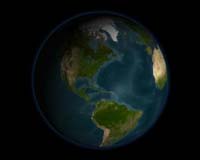 |
Tokyo (AFP) March 11, 2010 Japan calls it an island, China says it's just a few rocks. The squabble over the status of tiny Okinotorishima is at the centre of a new strategic power game between the Asian rivals. For many decades after Japan annexed the remote speck on the map once known as Parece Vela in 1931, it remained relatively obscure, battered by high tides and typhoons tearing across the Pacific Ocean. But more recently, Japan has drawn the ire of China with plans, now before parliament, to build a port at Okinotorishima, which has a Tokyo post code although it is located 1,700 kilometres (1,100 miles) south of the capital. Japan plans to explore the seabed resources and fishing grounds in what it claims as its Exclusive Economic Zone (EEZ) extending 200 nautical miles around Okinotorishima, which lies half-way between Taiwan and Guam. China has never disputed Japan's sovereignty over Okinotorishima but rejects its claim to the 400,000 square kilometre (155,000 square mile) marine footprint, which is larger than Japan's entire land area. At high tide, says Beijing, one can see only two rocks "which cannot sustain human habitation or economic life of their own" -- conditions for an EEZ according to the UN Convention on the Law of the Sea. Japan has consistently argued that Okinotorishima is an island. "We have no idea why China has started to challenge that," said Yasuhiro Okanishi, cabinet counsellor at the Headquarters for Ocean Policy Secretariat. "At low tide, Okinotorishima measures 4.5 kilometres by 1.8 km. It covers eight square kilometres. The coastline is 10 km long. It is a big island." Japan also charges that China has declared its own EEZs around mere rocks, even coral shoals, in the South China Sea, where several archipelagos are disputed with Vietnam and other Southeast Asian nations. "Some so-called Chinese islands are below the sea level, and even at low tide you don't see anything," said Shin Tani, another cabinet counsellor for Ocean Policy. There is much at stake. The seafloor around Okinotorishima boasts mineral deposits such as manganese, cobalt and lithium, potentially worth tens of billions of dollars. "If Okinotorishima stays as a rock, it will not be entitled to an EEZ, so the ocean around it will be open sea and the resources will be subject to competition among several countries, including China," said Kyoto Sangyo University foreign policy professor Kazuhiko Togo. Other analysts believe Beijing's interest is mainly strategic. Okinotorishima lies about half-way between Taiwan, which China considers a renegade province, and the US territory and major military base of Guam. Japan's EEZ would overlap with China's main access route to the Pacific, seen as the new theatre for maritime rivalry with the United States. "China is a coastal state but not an ocean state because all of our country's ocean areas are blocked by island chains," Gao Zhiguo, a Chinese judge on the UN International Tribunal for the Law of the Sea, wrote in 2007. "It is our consistent hope that after the recovery of Taiwan, China can become a real ocean state facing the Pacific straight on. However, if Japan declares the EEZ around Okinotorishima, our good natured hope will meet a setback." He added that the "strategic and military importance of Okinotorishima is quite obvious" as it "can be used in peace as a reconnaissance station against our military operations, and as a battlefront base in wartime." Matsushiro Horiguchi, visiting professor at the Graduate School of Asia and Pacific Studies at Waseda University, said China treats its own EEZ like its territorial waters, although they have a different legal status. China demands that foreign military vessels give it prior notice before passing through its EEZ and fears Japan will do the same, he said. "The Chinese think that if Japan declares an EEZ around Okinotorishima it will hinder the activities of Chinese submarines and others vessels," he said.
Share This Article With Planet Earth
Related Links Powering The World in the 21st Century at Energy-Daily.com
 East Africa is next hot oil zone
East Africa is next hot oil zoneNairobi, Kenya (UPI) Mar 10, 2009 East Africa is emerging as the next oil boom following a big strike in Uganda's Lake Albert Basin. Other oil and natural gas reserves have been found in Tanzania and Mozambique and exploration is under way in Ethiopia and even war-torn Somalia. The region, until recently largely ignored by the energy industry, is "the last real high-potential area in the world that hasn't been fully exp ... read more |
|
| The content herein, unless otherwise known to be public domain, are Copyright 1995-2010 - SpaceDaily. AFP and UPI Wire Stories are copyright Agence France-Presse and United Press International. ESA Portal Reports are copyright European Space Agency. All NASA sourced material is public domain. Additional copyrights may apply in whole or part to other bona fide parties. Advertising does not imply endorsement,agreement or approval of any opinions, statements or information provided by SpaceDaily on any Web page published or hosted by SpaceDaily. Privacy Statement |